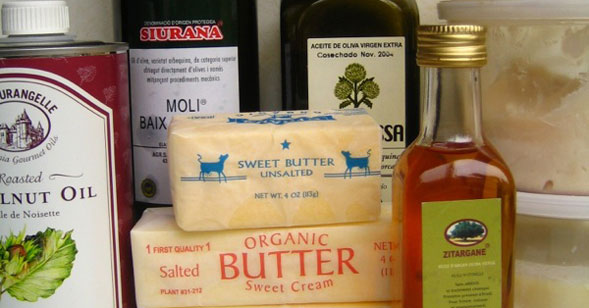
Fats: The Good, The Bad And The Ugly
‘Low-fat’ and ‘fat-free’ products fill many shelves in the supermarket. However to have a healthy diet it is not enough just to know which foods are high or low in fat; we also need to look at the different types of fat, and understand the role they play in our body when they are consumed.
Not all fat is created equal. There is fat which is essential for good health, and there is fat which is down right dirty, and should be avoided as much as possible.
The Good: Unsaturated Fat
Fats that are unsaturated tend to be liquid at room temperature and consist of both monounsaturated fats and polyunsaturated fats.
A diet high in monounsaturated fats, which is found in plant oils such as olive oil, avocados, and nuts, help lower levels of “bad” cholesterol, without lowering the levels of “good” cholesterol in your blood.
Polyunsaturated fat is also very important for your health, and helps to maintain good cholesterol levels. There are two types of polyunsaturated fat: omega-6 and omega-3.
Omega-6 is found in vegetable oils such as canola (which is also a good source of monounsaturated fat) and sunflower, and is essential for growth, cell structure, and maintaining a healthy immune system.
Omega-3 is found in oils from cold water fish such as salmon, tuna and sardines. Another great source is flax seeds (linseed oil). Omega-3 is essential for the body as it plays a role in regulating blood pressure and blood clotting, helps to maintain a healthy immune system, and assists in brain and spinal cord function.
The Bad: Saturated Fat
Saturated fat is the bad guy. Fats that are saturated tend to be solid at room temperature and are known to increase the risk of cardiovascular disease by raising the “bad” cholesterol in your blood. With the exception of palm and coconut oils, the majority of saturated fats are derived from animal products. Red meat is a major source of saturated fat, along with whole milk and whole milk products (cheese, cream, ice-cream, etc).
But never enjoying a bowl of ice-cream after a juicy steak is no way to live, so the way to make healthier choices is to avoid manufactured meat products, such as sausages and salami, trim visible fat from meat before cooking, choose meat without visible fat or marbling, and choose low-fat milk and milk products.
When eating poultry (e.g. chicken), you can reduce the fat content by not eating the skin and by choosing to eat the white meat rather then the dark meat, which contains more saturated fat.
The Ugly: Trans Fat
Technically trans fat is an unsaturated fat, however it acts like saturated fat, causing your cholesterol levels to rise. Some studies suggest that the effects of trans fat are worse than saturated fat. Trans fat occurs naturally in very small amounts in meat and dairy products, but is also manufactured. Trans fats are most commonly found in processed food – cakes, biscuits, pies, and take-away. Trans fat should be avoided as much as possible.
In Summary
Fat is an essential part of a healthy diet. You just have to choose the right types of fat and enjoy them in moderation.

Lisa mom of 2 boys -
Great article. I tweeted it out. Found it very helpful!
Thanks,
Lisa
John Kuzora -
Really? Have you reviewed any of the research? Oxidized polyunsaturated fats clog arteries, not saturated fats that are resistant to oxidation.
Megan -
Hi John. Thanks for the comment. I have reviewed research into fats however not on the oxidisation of fat. Can you provide me with some links on the research you are referring to? Im always happy to look into other information. Megan